Cheese sourdough bread is a flavorful homemade treat that combines the tangy goodness of sourdough with the richness of cheddar cheese and a hint of jalapeno. The sharpness of the cheese and the mild heat from the jalapeno creates a taste experience that is sure to impress.
Follow this tried-and-tested recipe to create this delicious bread in the comfort of your own kitchen and enjoy the mouthwatering aroma that fills your home.
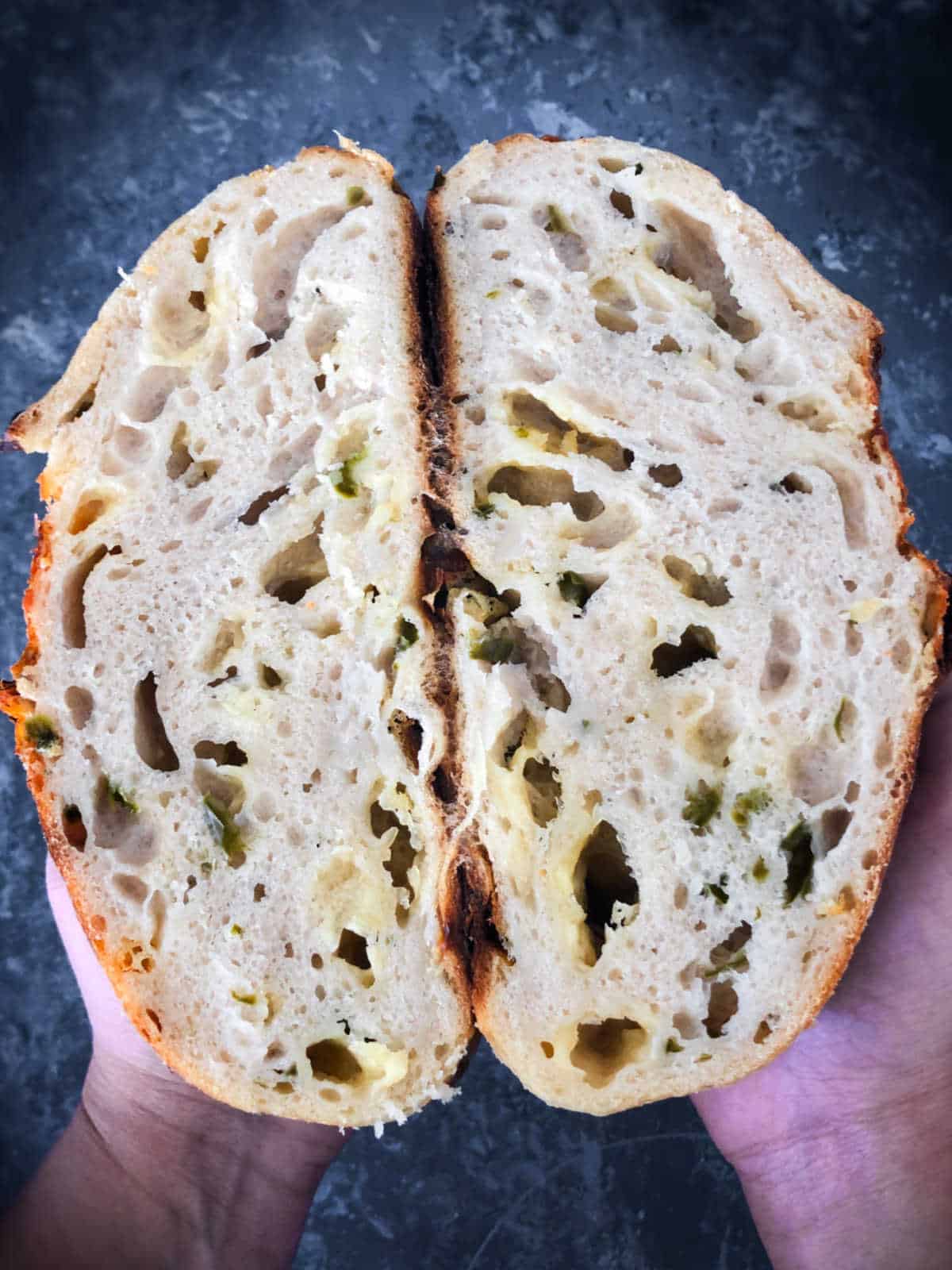
This bread is a variation of the no-knead homemade sourdough bread recipe I shared earlier, enhanced with the addition of cheddar cheese and jalapenos. When these ingredients are baked into the naturally leavened bread, the result is a delightful and delicious taste experience.
Why you will love this recipe?
- The combination of tangy sourdough, sharp cheddar cheese, and spicy jalapeño peppers creates a unique and delicious flavor profile that is both savory and slightly spicy. This delicious and unique sourdough bread flavor is a must-try.
- This cheese sourdough bread offers a wonderful textural experience with its crusty exterior and soft, cheesy interior.
- The jalapeno cheddar cheese sourdough bread can be enjoyed on its own, sliced and toasted, or used as a base for various sandwiches and dips.
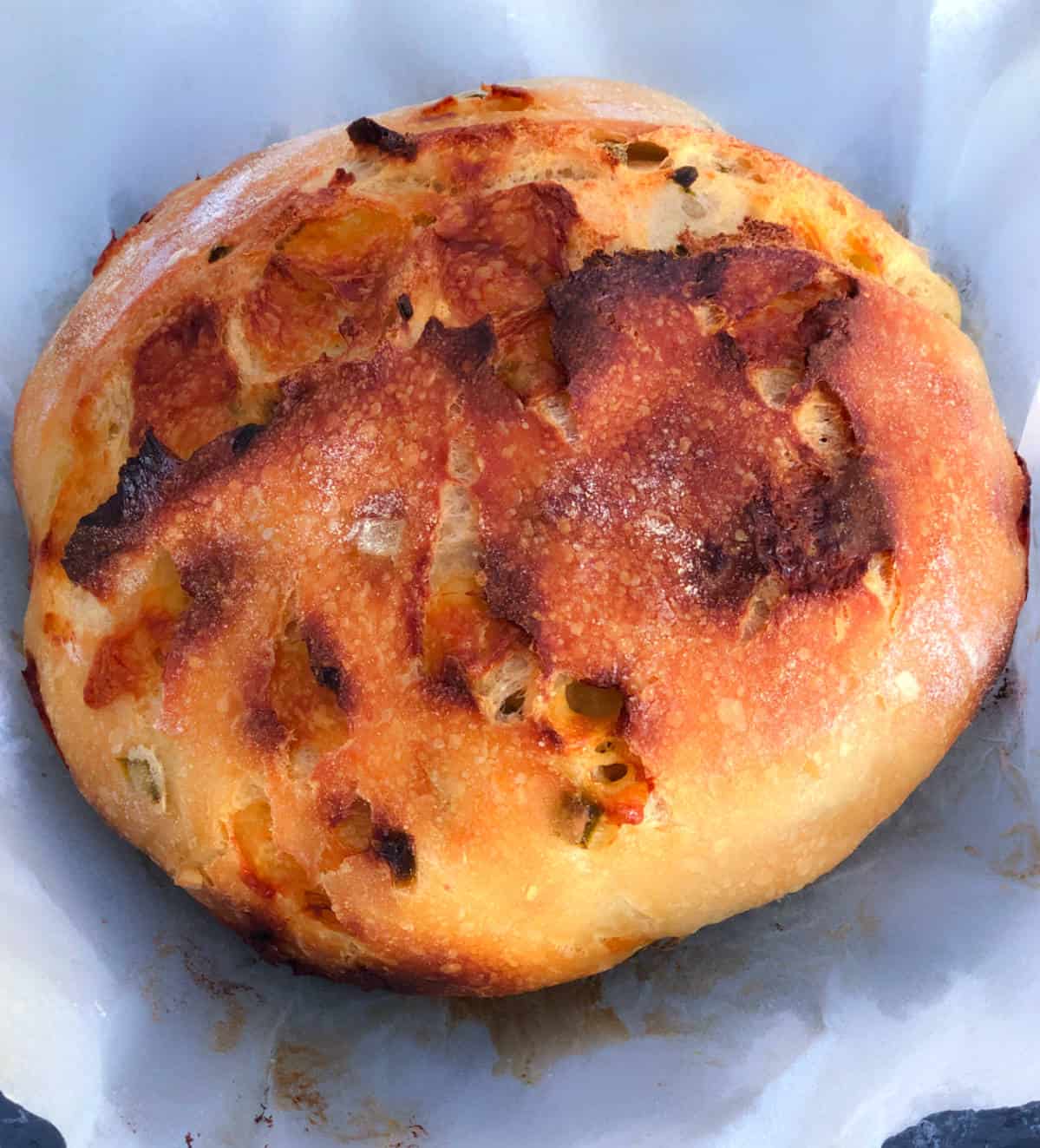
Grated cheese or cubes of cheese?
I like to use small cubes of cheese in this bread as it creates small cheesy pockets and gives a more varied and dynamic eating experience. The choice between using grated cheese and small cubes of cheese in this sourdough cheese bread recipe can influence the texture, distribution, and flavor.
Grated cheese yields a consistent texture and even distribution throughout the dough. In contrast, small cheese cubes introduce dynamic variations, forming pockets of melted cheese that offer bursts of gooey, flavorful bites and a pleasantly uneven distribution.
Additionally, while grated cheese contributes to a quick, thin melting layer, contributing to a golden-brown crust, small cheese cubes melt more slowly, retaining their shape longer and presenting slightly caramelized edges.
Ingredients
Sourdough starter: Follow this recipe to make your own sourdough starter, and ensure it is active and bubbly.
Cheddar cheese: Cut the cheese into small cubes and add to the dough. I prefer using cheese cubes and not shredded cheese.
Jalapeno: I used fresh jalapeno; however, you may replace it with pickled jalapeno, too. Remove the seeds and cut them into small pieces.
See the recipe card for full information on ingredients and quantities.
Step-by-step instructions
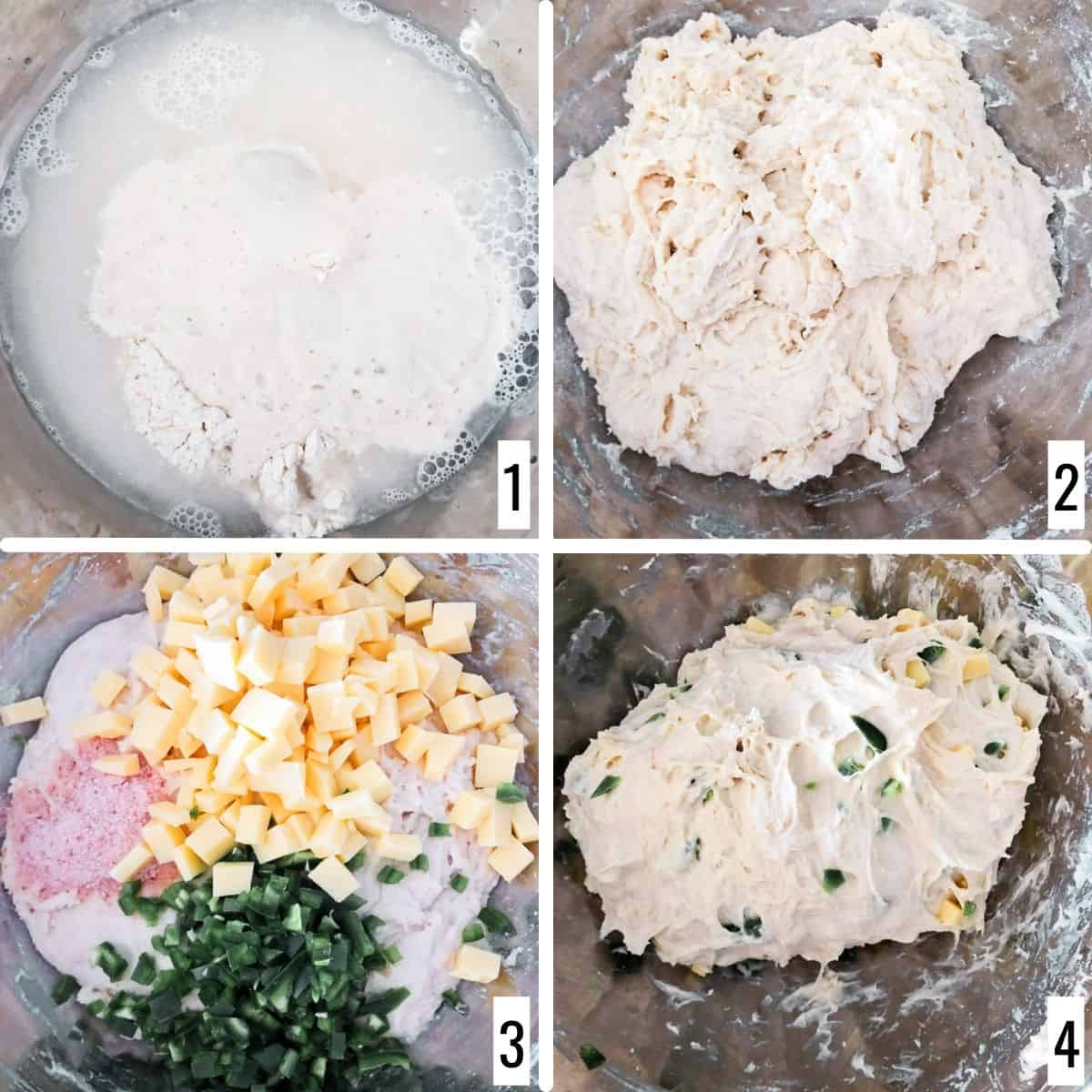
Step 1: Combine the active sourdough starter and water in a large mixing bowl until fully incorporated. You can use a dough whisk or a wooden spoon for this. Slowly add the flour and mix well, making sure there are no dry bits of flour. Let it rest for 30 minutes (images 1 and 2).
Step 2: Next, add salt, cheddar cheese, and jalapeno to the dough (image 3). Mix well and try to incorporate them as much as possible. Let the dough rest for 30 minutes (image 4). All the add-ins may not get incorporated at the beginning, and that is fine. They will integrate into the dough along with every stretch and fold.
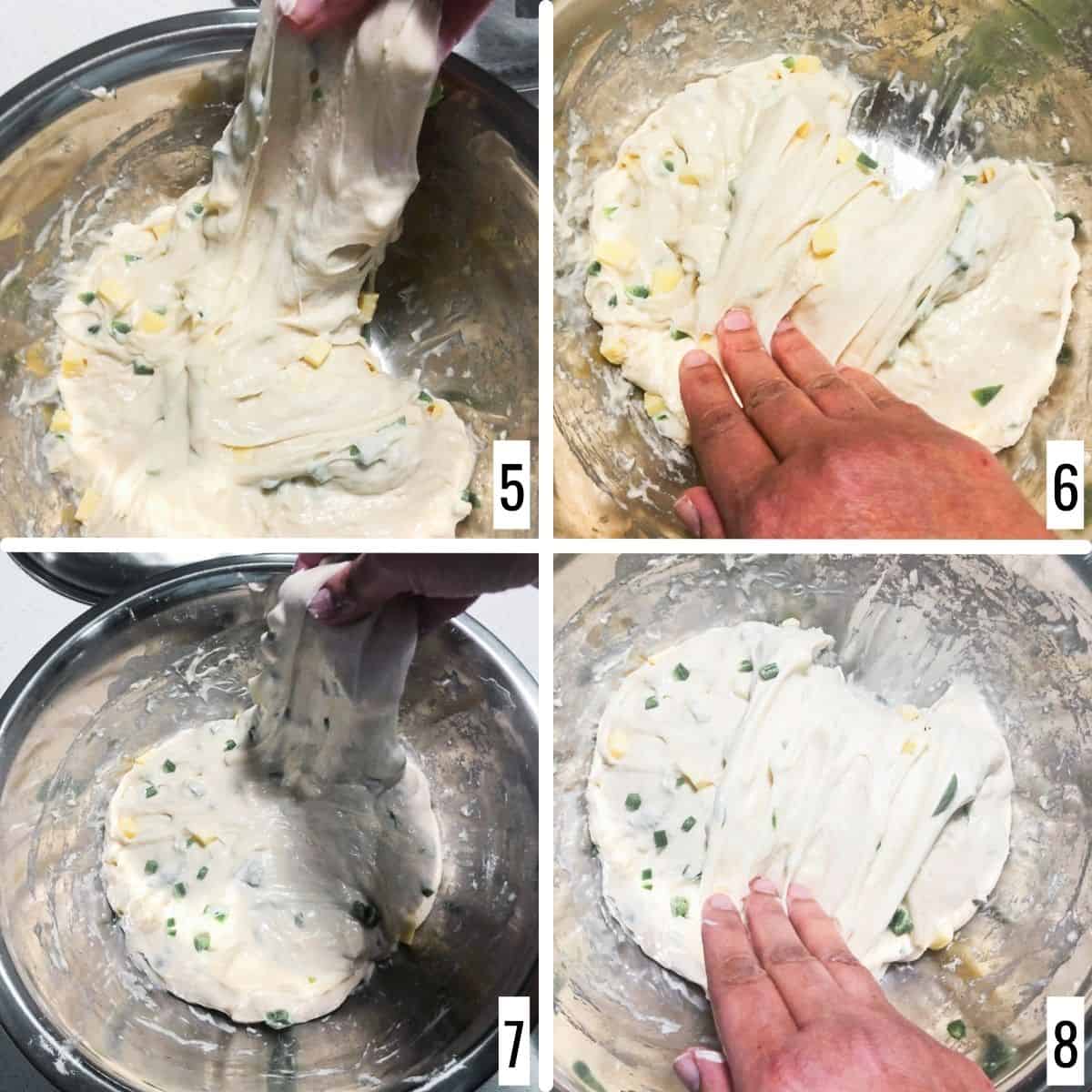
Step 3: Once the dough has rested, begin the stretch-and-fold technique. Gently pull the dough to perform this technique. Gently stretch the edges of the dough and fold them back to the center (images 5 and 6).
Step 4: Continue to stretch and fold the dough, doing a quarter turn of the bowl after each dough rest (images 7 and 8).
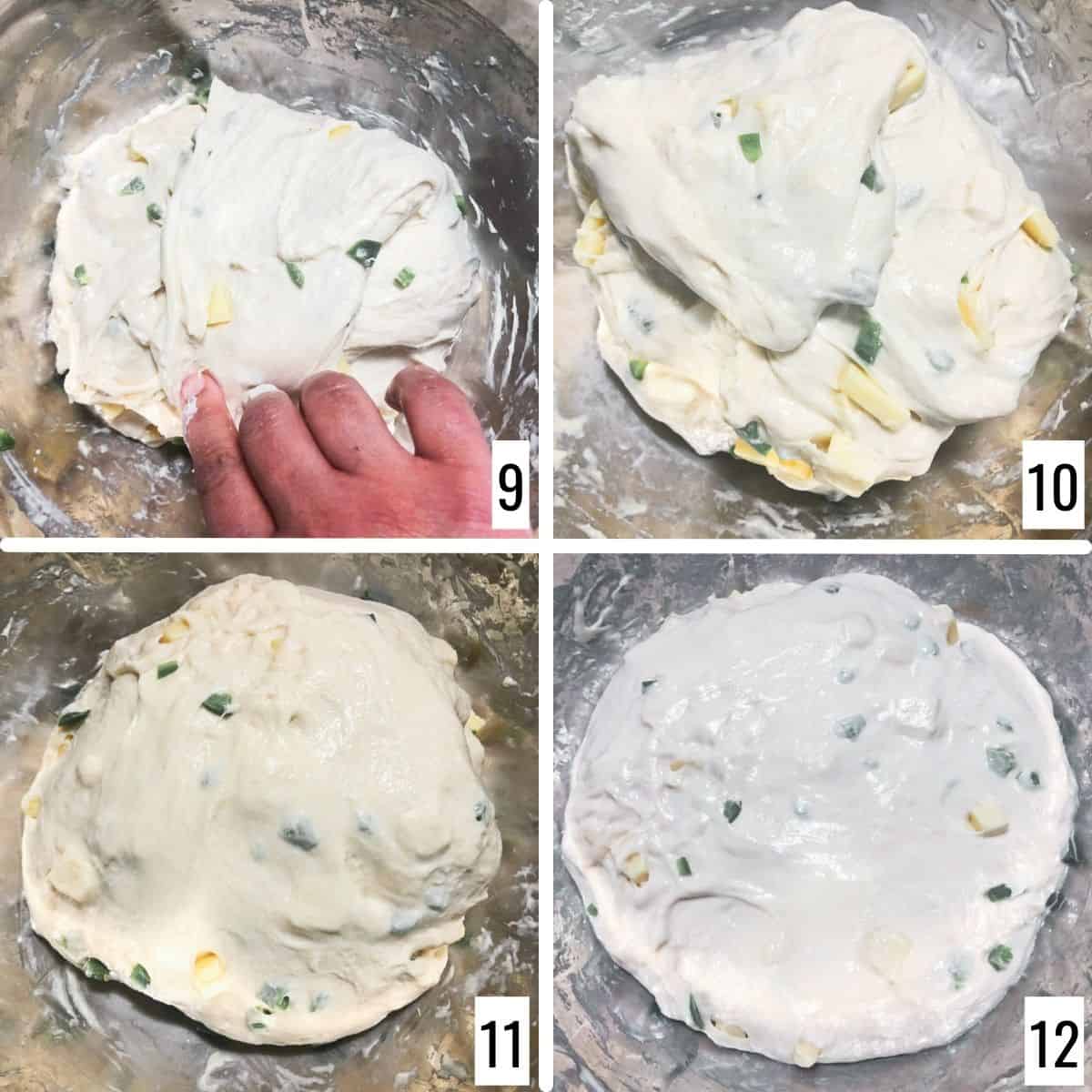
Step 5: The dough develops gluten and builds strength and structure with every stretch and fold. As you can see, the add-ins are all well incorporated at the end of these cycles (images 9 and 10).
Step 6: Let the dough sit for bulk fermentation (image 11). The time taken depends highly on the ambient temperature of your kitchen, so go by the feel of the dough rather than the time. The dough rise is almost doubled after bulk fermentation (image 12).
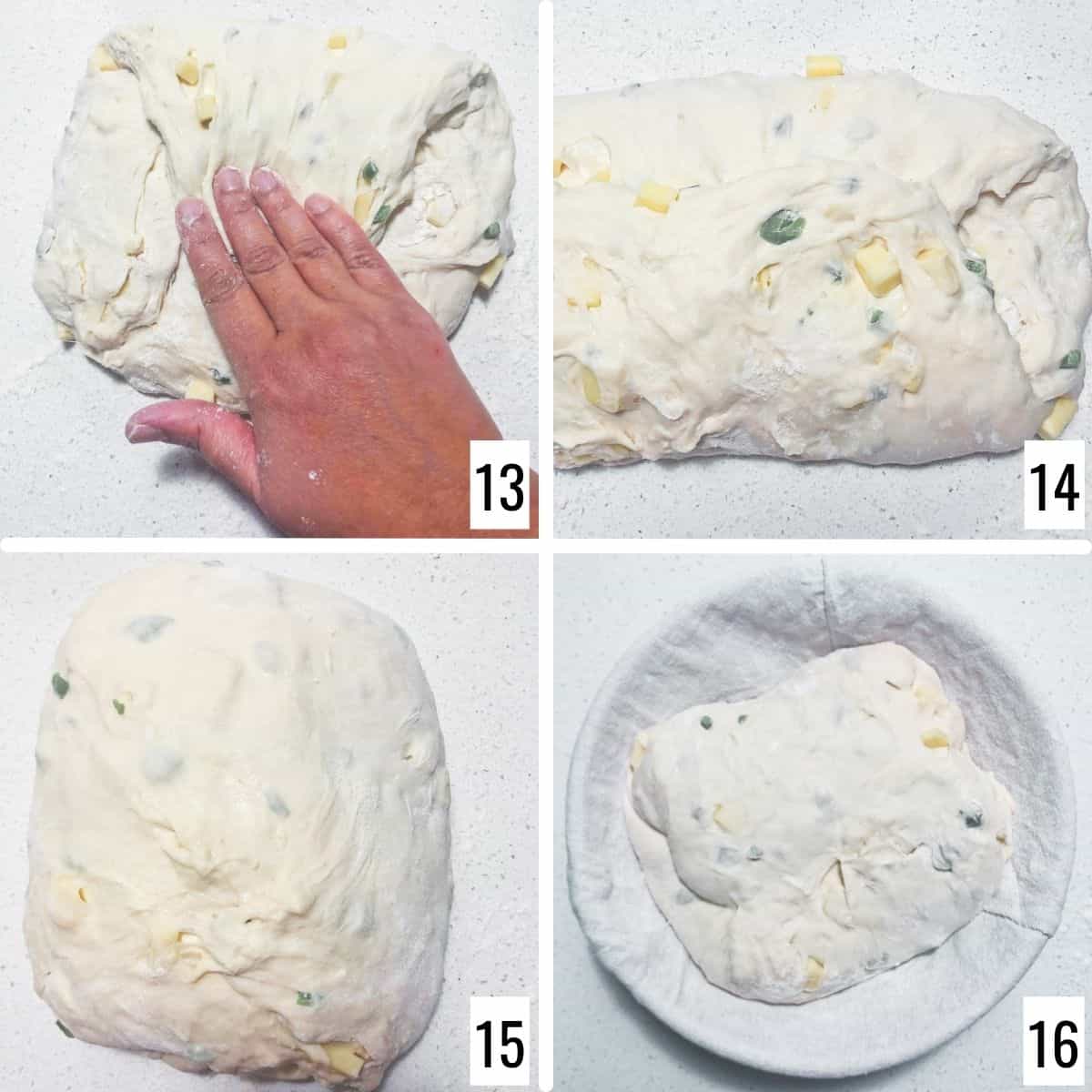
Step 7: After the bread dough rises, flip the dough onto a lightly floured work surface. Pick one side of the dough and fold it to the center. Pick the other side and fold it to the center (images 13 and 14). Now hold the dough gently and tuck it to form a log (image 15).
Step 8: Carefully place the shaped dough seam side up on the banneton or proofing basket. Cover the dough loosely with a damp towel, shower cap, or plastic bag. Place it in the refrigerator overnight for cold fermentation and a second rise (image 16).
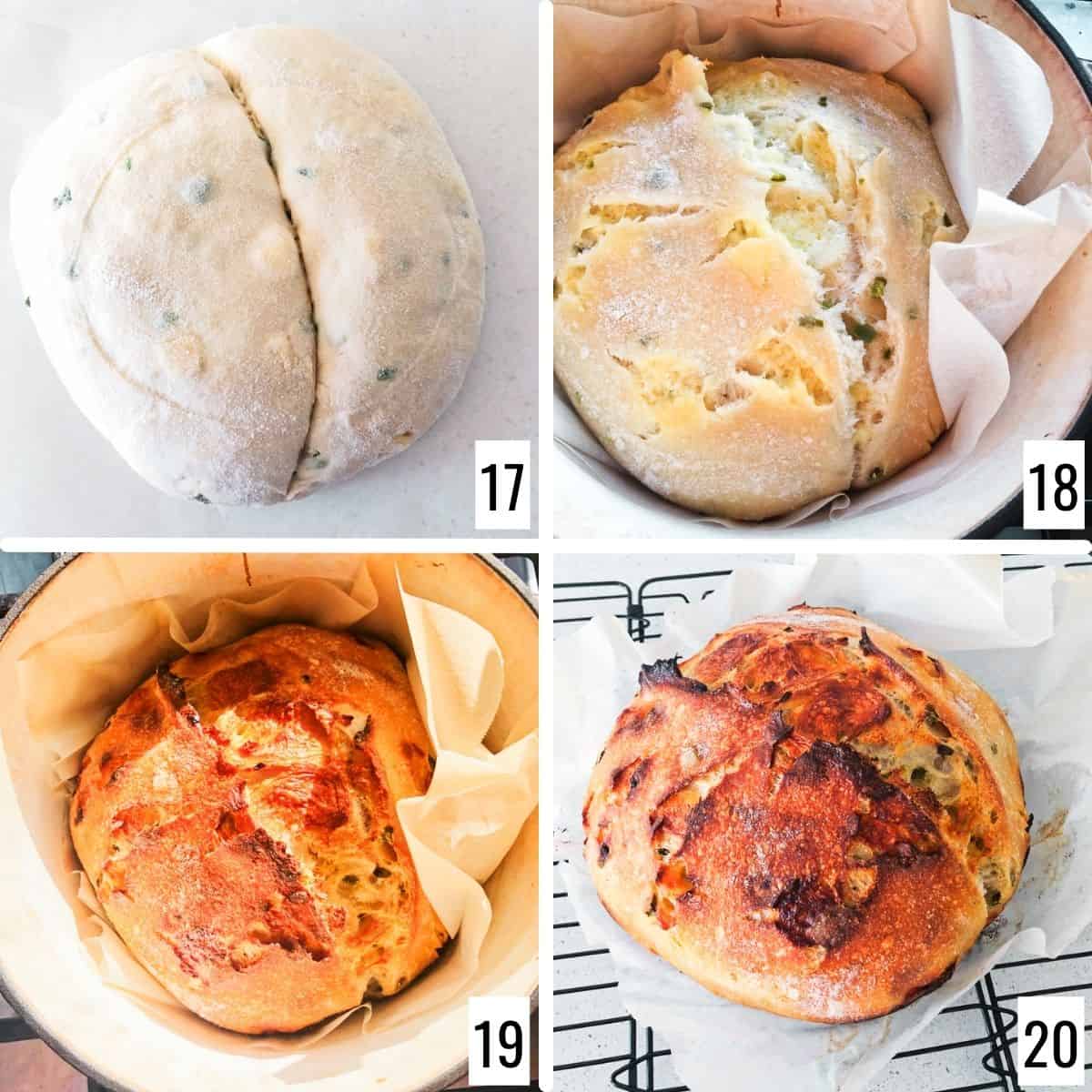
Step 9: The next day, set the oven temperature to 450 F (230 C) and preheat it for 45 minutes. Once the oven is preheated, take the dough out of the fridge. Flip it onto a parchment paper or baking sheet. Score the dough using a razor blade or sharp knife (image 17).
Step 10: Carefully take the covered Dutch oven out of the oven. Place the scored dough along with the baking paper into the hot Dutch oven and immediately close the lid. Place it back in the oven and bake for 20 minutes (image 18).
Step 11: Take the lid off the Dutch oven and bake for another 15 minutes, until the crust is golden brown (image 19). Cool the sourdough cheese bread completely on a cooling rack before slicing (image 20).
Expert Tips
All of the jalapeno and cheese cubes will not be incorporated in the first go. Don't worry about it. As you stretch and fold, they will be incorporated. Just tuck the fillings back into the dough if they pop on the surface. See here for more tips on how to handle sourdough with add-ins.
I have made this sourdough with bread flour, but you can choose any flour - for example, a combination of all-purpose flour and whole wheat flour or multigrain flour.
The night before you plan to make the dough, take the starter from the fridge and feed it in 1:1:1 ratio of starter:flour:water. Click here to see how to activate the sourdough starter.
How to serve cheese sourdough bread?
As-is or toasted: Slice it into thick slices and savor the combination of tangy sourdough, spicy jalapenos, and rich cheddar cheese. Toast the sourdough cheese bread to enhance its flavors and add a crispy texture.
Sandwiches and paninis: To make delicious sandwiches and paninis, use this sourdough cheese bread instead of regular or sourdough sandwich bread. It pairs well with roasted turkey or chicken, avocado, lettuce, and tomato.
Soup or salad: Serve the sourdough cheese bread as a side to a hearty soup or a fresh salad. It pairs well with tomato soup, chicken shorba, Greek salad, or cabbage salad. We also love it with hearty goat soup or barley soup.
Recipe FAQs
In this recipe, I have used cheddar cheese. However, you can use different cheeses instead of cheddar in jalapeno and cheese sourdough bread. The types of cheese to be considered are Monterey Jack for a mild and buttery flavor, pepper jack for a spicier kick, Colby for a milder alternative, Gouda for a nutty richness, or Swiss for a mild and slightly sweet taste. Each cheese will bring its own unique flavor profile to the bread.
Certainly! If you don't enjoy spicy food, you can definitely omit the jalapenos from this bread. The jalapenos provide spiciness and heat to the bread, so by leaving them out, you'll have a milder version of the cheese sourdough bread with a focus on the cheesy goodness and the tangy flavor from the sourdough.
While traditional methods involving hand mixing along with stretch and fold (or coil fold) are commonly used for sourdough bread, you can adapt the recipe to use a bread machine or stand mixer with a dough hook attachment. Adjust the mixing and kneading times accordingly, following the instructions for the specific equipment.

More sourdough recipes
If you tried this Cheese Sourdough Bread Recipe or any other recipe on my website, please leave a ? star rating and let me know how it went in the ? comments below.
Recipe card
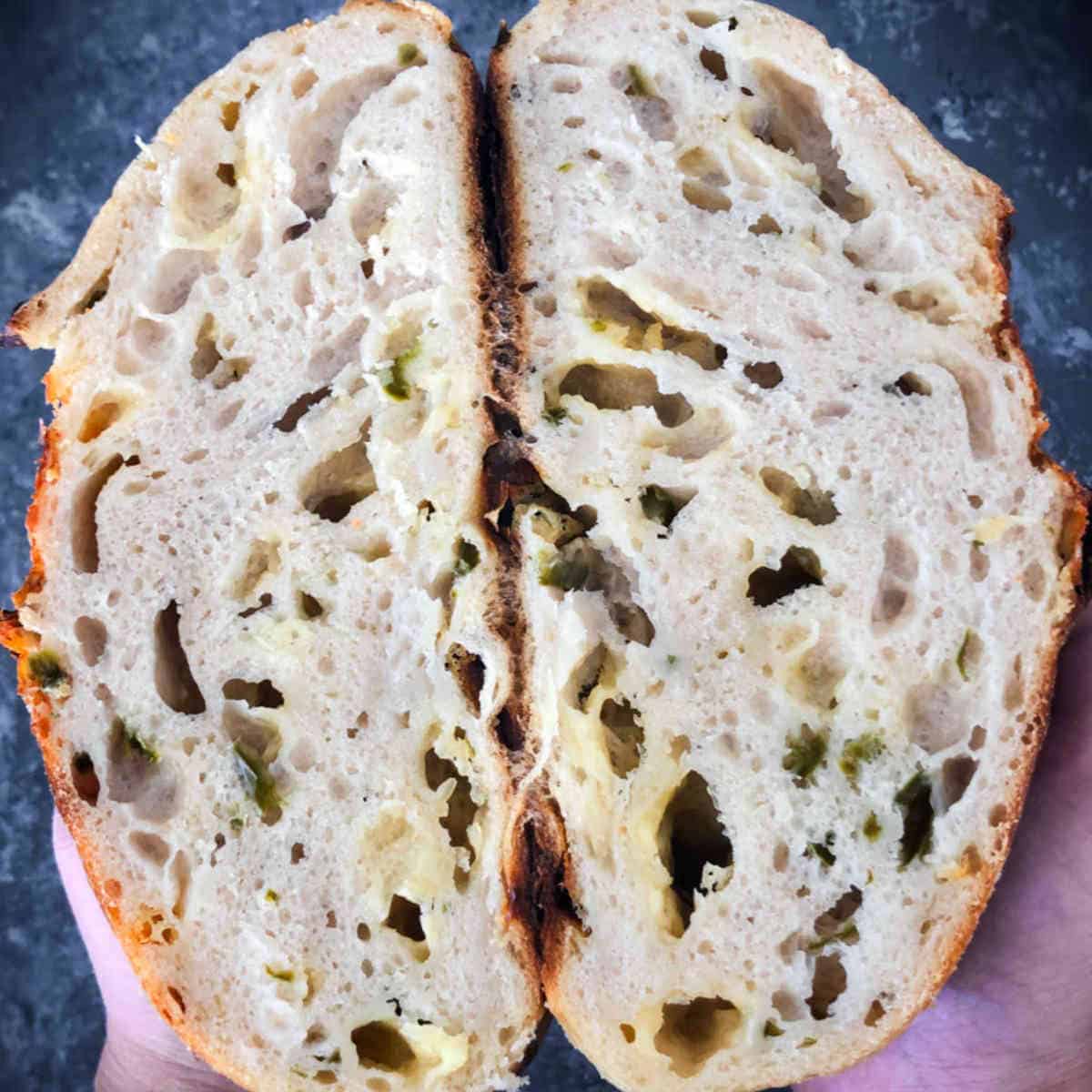
Jalapeno Cheddar Cheese Sourdough Bread
Equipment
- Bread lame or razor blade to score the dough
Ingredients
- 150 grams sourdough starter active
- 450 grams bread flour
- 325 grams filter water
- 1 teaspoon salt
- 1 cup cheddar cheese cut into small cubes
- ½ cup jalapeno cut into small pieces
- Rice flour to dust the banneton
Instructions
Make the initial dough:
- Combine the active sourdough starter with water until it is fully incorporated.
- Slowly add the flour and mix well making sure there are no dry bits of flour. Let it rest for 30 minutes.
- Next, add the salt, cheddar cheese, and jalapeno to the dough. Mix well and incorporate them as much as possible.
Bulk Fermentation:
- Perform six sets of stretch and fold at an interval of 30 minutes. With wet hands, grab a portion of the dough and slowly stretch it taking care not to break it, and fold it towards the center over the dough. Keep turning the bowl and repeat the process until all parts of the dough is covered. Carefully flip the dough and round it up. This completes one set of stretch and fold. Repeat this process six times at an interval of 30 minutes.
- Let the dough sit for bulk fermentation until it is almost double and has bubbles on the top. This may take 3-4 hours depending on the ambient temperature.
Shaping and cold fermentation:
- Dust a round or oval banneton well with rice flour.
- Flip the dough onto a lightly floured surface. Pick one side of the dough and fold it to the center. Pick the other side and fold it to the center. Now hold the dough gently and tuck it to form a log. Carefully place the dough seam-side up on the banneton.
- Cover the dough loosely and place it in the refrigerator overnight for cold fermentation and final rise.
Bake the cheese sourdough bread:
- The following morning, place the Dutch oven in the oven and preheat to 450 F (230 C) for 45 minutes.
- Once the oven is preheated, take the dough out of the fridge. Flip it onto a parchment paper or baking sheet.
- Score the dough using a blade or sharp knife.
- Carefully take the Dutch oven out of the oven. Place the scored dough along with the baking paper into the hot Dutch oven and immediately close the lid.
- Place it back in the oven and bake for 20 minutes.
- Take the lid off the Dutch oven and bake for another 15 minutes.
- Turn off the oven and keep the door ajar. Let the bread sit in the oven for 15 minutes for curing.
- Cool completely, slice, and serve.

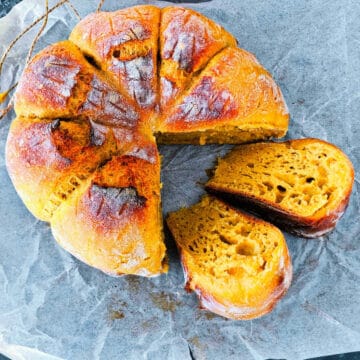
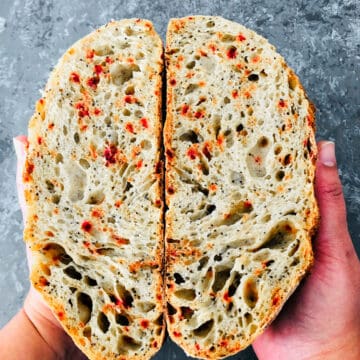
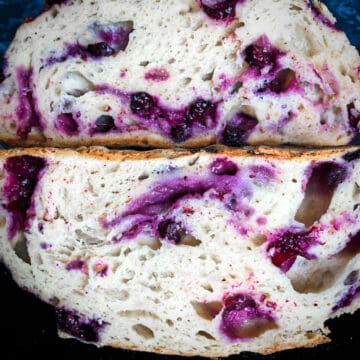
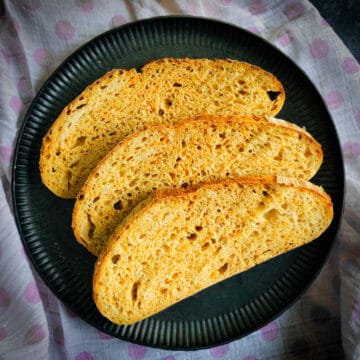
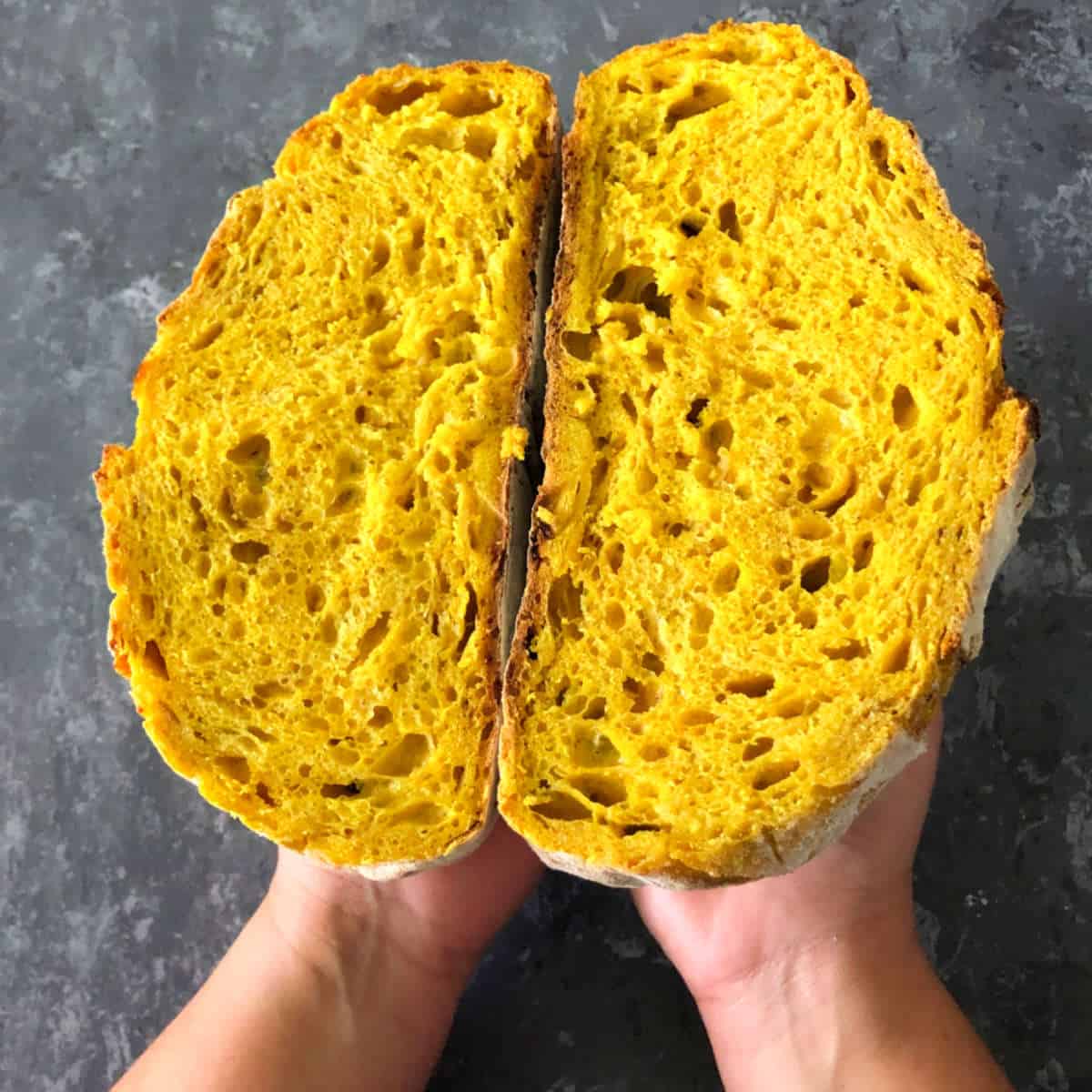
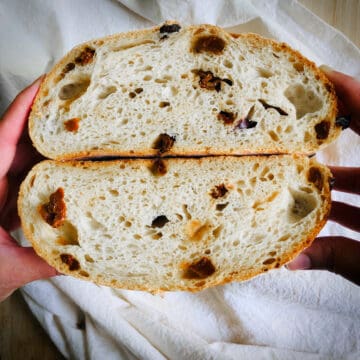
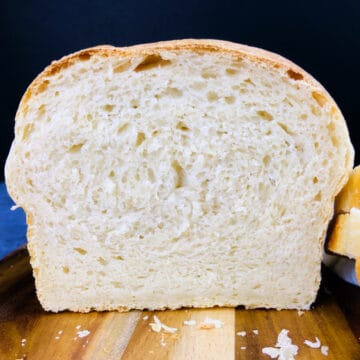
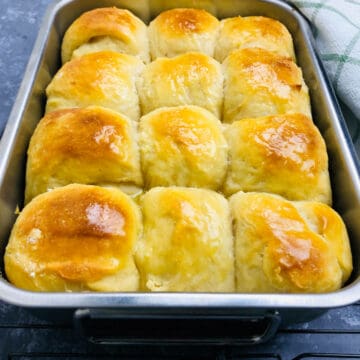
Comments
No Comments